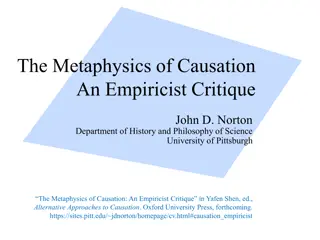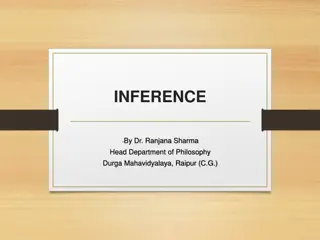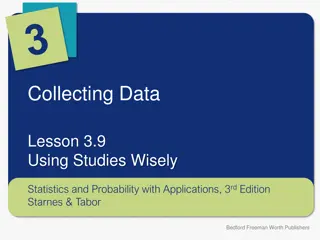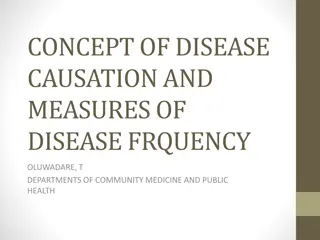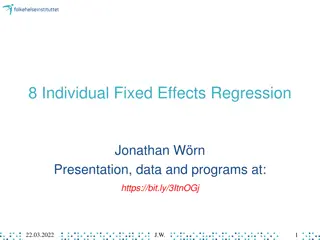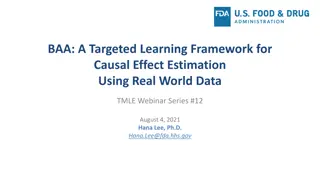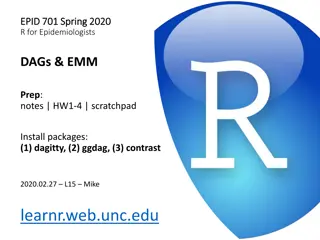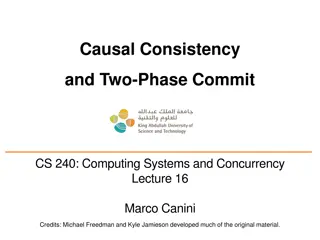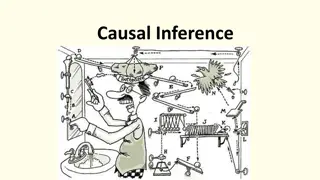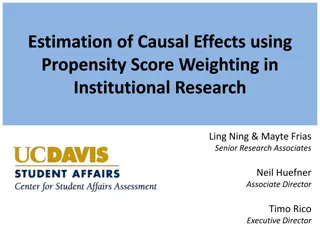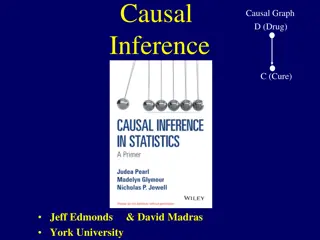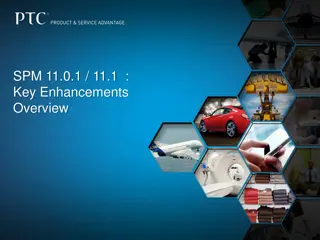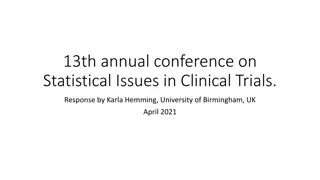Exploring Causal Inference Models and Data-Driven Methods
Delve into various examples of causal inference models and data analysis methods, from traditional statistical models to cutting-edge data-driven approaches like AI/ML. Understand the challenges of causality interpretation and explore the trade-offs between data size, prediction, and causality in different scenarios.
Download Presentation

Please find below an Image/Link to download the presentation.
The content on the website is provided AS IS for your information and personal use only. It may not be sold, licensed, or shared on other websites without obtaining consent from the author. Download presentation by click this link. If you encounter any issues during the download, it is possible that the publisher has removed the file from their server.
E N D
Presentation Transcript
People around 5 5 minutes People are around in minutes are told in a a dark told to dark room to run room for run for Observation: Men are found to have many more head injuries than women Conclusion: Women see better in the dark? Men are more reckless runners? Example: Causality interpretation
Women babies under Women who babies that under weight who smoke that are weight on smoke have are 600 on average have grams average 600 grams Problem: Is it smoking or unobserved factors that are correlated with smoking? Example: Unobserved heterogeneity
Effectiveness Airbags Cars with side impact airbags have lower injury severities Effectiveness of Airbags of Side Side- -Impact Impact Problem: People owning side-impact airbag are not a random sample of the population (likely safer drivers) Safer drivers would naturally have lower injury severities Example: Endogeneity: Self Selectivity
Effectiveness Safety Effectiveness of Safety Course of Motorcycle Motorcycle Course People who take motorcycle safety courses have higher crash rates Are courses ineffective? Example: Problem: People taking the course are not a random sample of the population (likely less skilled) Endogeneity: Self Selectivity
Causal-inference models Data analysis methods Traditional statistical models Heterogeneity models Data-driven methods (AI/ML)
Data driven methods: Support Vector Machine Random Forest eXtreme Gradient Boosting (XGBoost) Deep Neural Network Recurrent Neural Network Convolutional Neural Network Agent-Based Machine Learning Etc.
Data size and prediction/causality trade-offs
Prediction/causality/data size trade-offs: Predictive Capability Causality/Inference Capability Big-Data Suitability Data-Driven Methods Heterogeneity Models Traditional Statistical Models Causal-inference models





